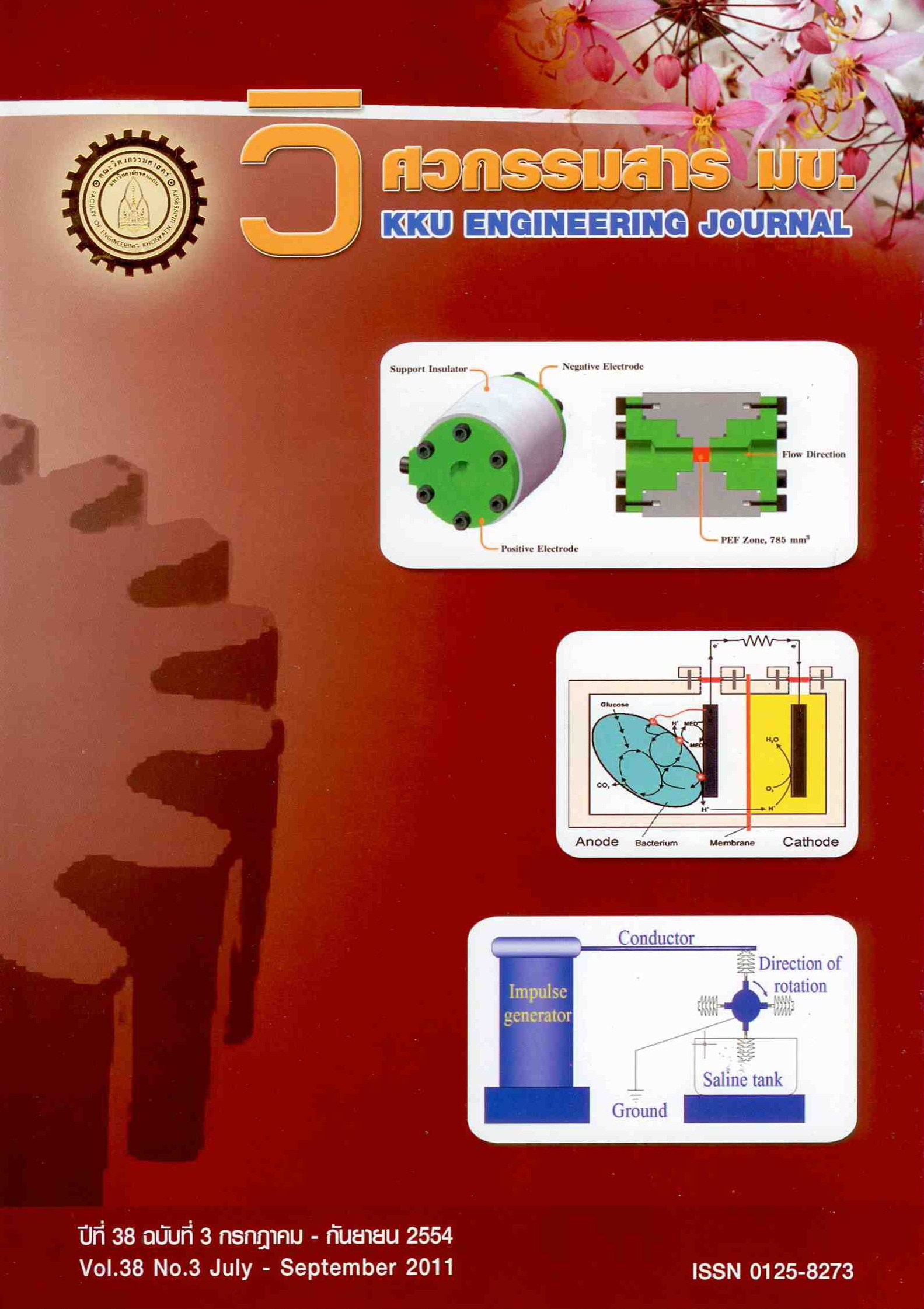The shear strength evaluation of unsaturated soils by Triaxail testing
Main Article Content
Abstract
The alternative meaning of unsaturated soil is partially saturated soil, in which the
degree of saturation is less than unity. Unsaturated soils have three phases of solid (soil particles), air and
water. Therefore the applications of mechanical and hydraulic laws are inadequate in describing unsaturated
soil behaviour. Unsaturated soil behaviour is associated of forces and energies with multi-phase interactions.
Since the fundamentals of interfacial physics are added in the application laws to explain unsaturated soil
behaviour. In particular, Terzaghi’s effective stress law for saturated soil is not appropriate for unsaturated soil
because of negative pore water pressure. The stress, which acts on unsaturated soil, not only acts through the
soil skeleton and the pore water, but also acts through the air phase. The stress state theory at failure of
unsaturated soil must consider the thermodynamic properties of pore water in terms of soil suction, material
variables, state variables and the consequent interparticle forces. In 1978, Fredlund et al. formulated the shear
strength equation for an unsaturated soil. The assumption that the internal friction angle (φ′ ) is constant with
matric suction and the relationship between matric suctions and shear strengths is linear. As the shear
strength of unsaturated soil is influenced by matric suction and the third shear parameter (φ b ) needs to be
determined (Fredlund et al 1978), the conventional triaxial equipment has to be modified. Thu et al. (2006)
found that non-linearity of the φ′ angle with respect to matric suction was in agreement with data reported by
Gan et al. (1988), Escario et al. (1989) and Vanapalli et al. (1996). Moreover Toll et al (2008) proposed that the
angle of friction due to net stress (φ a ) being greater than φ′ as measured in saturated conditions.
degree of saturation is less than unity. Unsaturated soils have three phases of solid (soil particles), air and
water. Therefore the applications of mechanical and hydraulic laws are inadequate in describing unsaturated
soil behaviour. Unsaturated soil behaviour is associated of forces and energies with multi-phase interactions.
Since the fundamentals of interfacial physics are added in the application laws to explain unsaturated soil
behaviour. In particular, Terzaghi’s effective stress law for saturated soil is not appropriate for unsaturated soil
because of negative pore water pressure. The stress, which acts on unsaturated soil, not only acts through the
soil skeleton and the pore water, but also acts through the air phase. The stress state theory at failure of
unsaturated soil must consider the thermodynamic properties of pore water in terms of soil suction, material
variables, state variables and the consequent interparticle forces. In 1978, Fredlund et al. formulated the shear
strength equation for an unsaturated soil. The assumption that the internal friction angle (φ′ ) is constant with
matric suction and the relationship between matric suctions and shear strengths is linear. As the shear
strength of unsaturated soil is influenced by matric suction and the third shear parameter (φ b ) needs to be
determined (Fredlund et al 1978), the conventional triaxial equipment has to be modified. Thu et al. (2006)
found that non-linearity of the φ′ angle with respect to matric suction was in agreement with data reported by
Gan et al. (1988), Escario et al. (1989) and Vanapalli et al. (1996). Moreover Toll et al (2008) proposed that the
angle of friction due to net stress (φ a ) being greater than φ′ as measured in saturated conditions.
Article Details
How to Cite
Nuntasarn, R. (2013). The shear strength evaluation of unsaturated soils by Triaxail testing. Engineering and Applied Science Research, 38(3), 335–345. retrieved from https://ph01.tci-thaijo.org/index.php/easr/article/view/7727
Issue
Section
REVIEW ARTICLES
This work is licensed under a Creative Commons Attribution-NonCommercial-NoDerivatives 4.0 International License.



